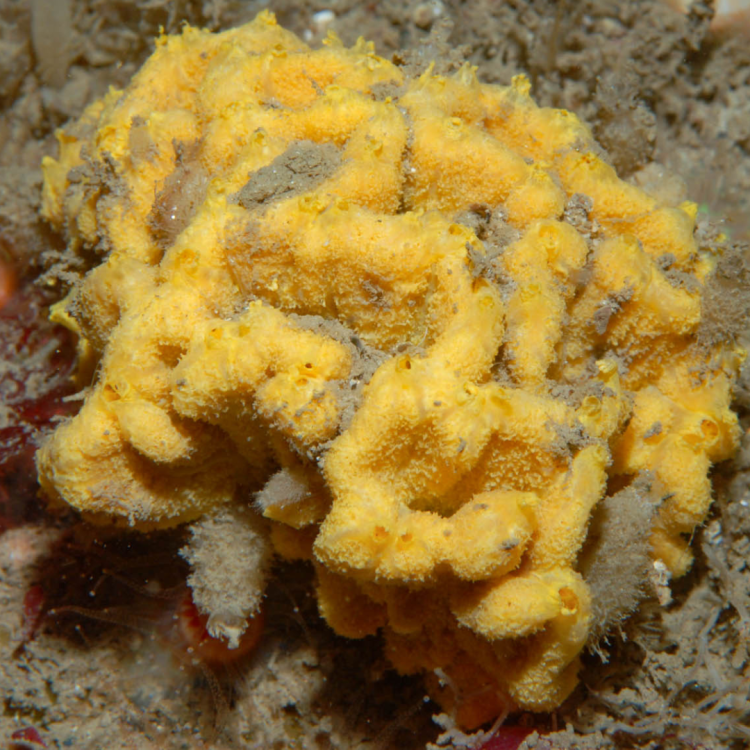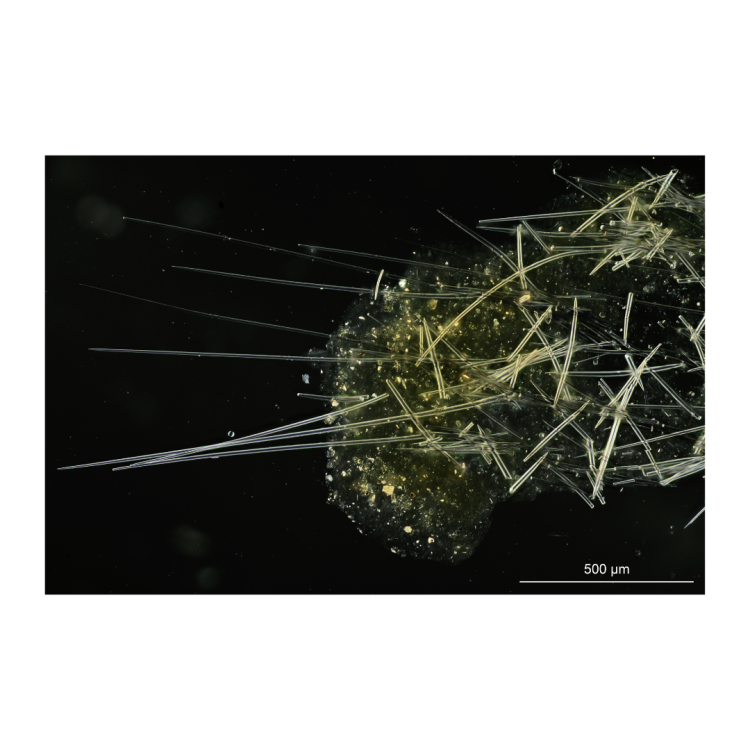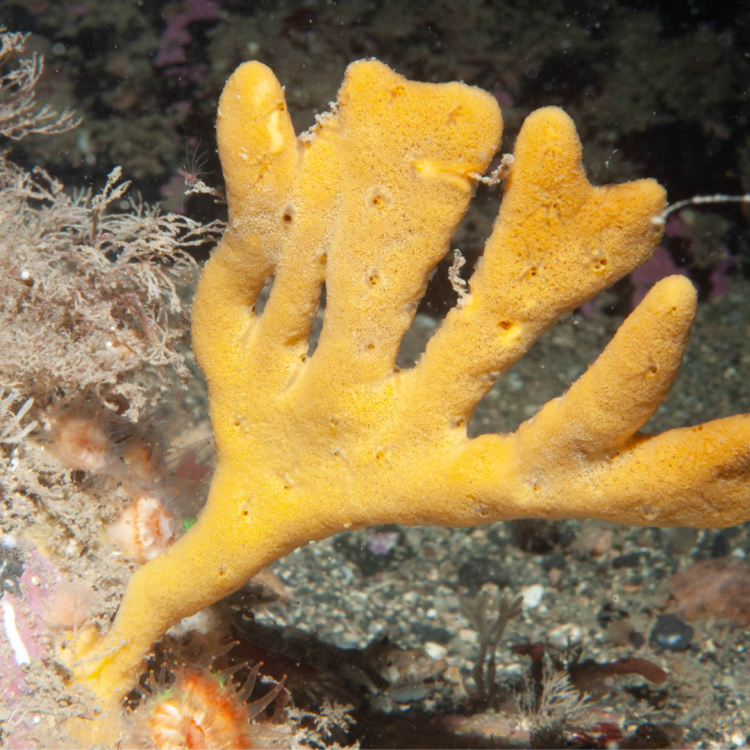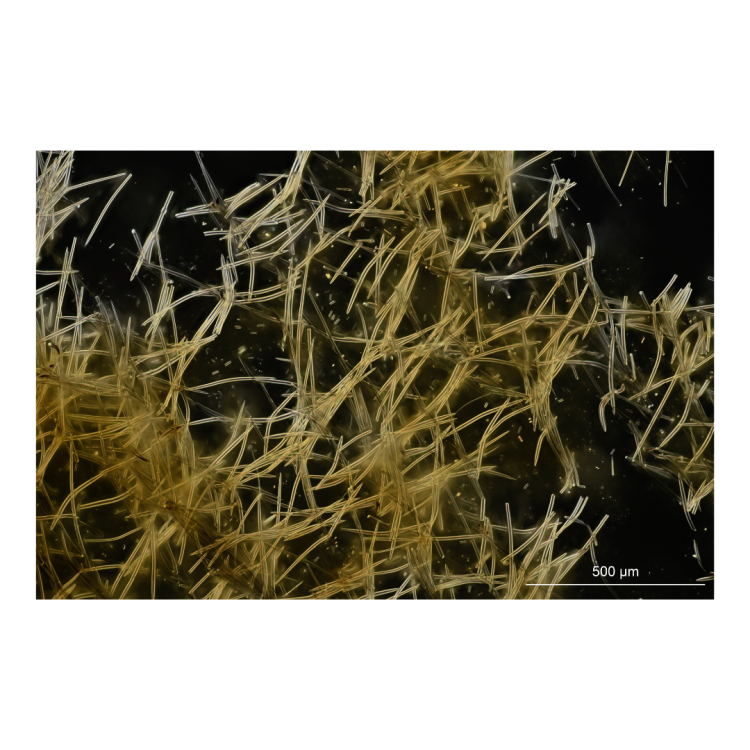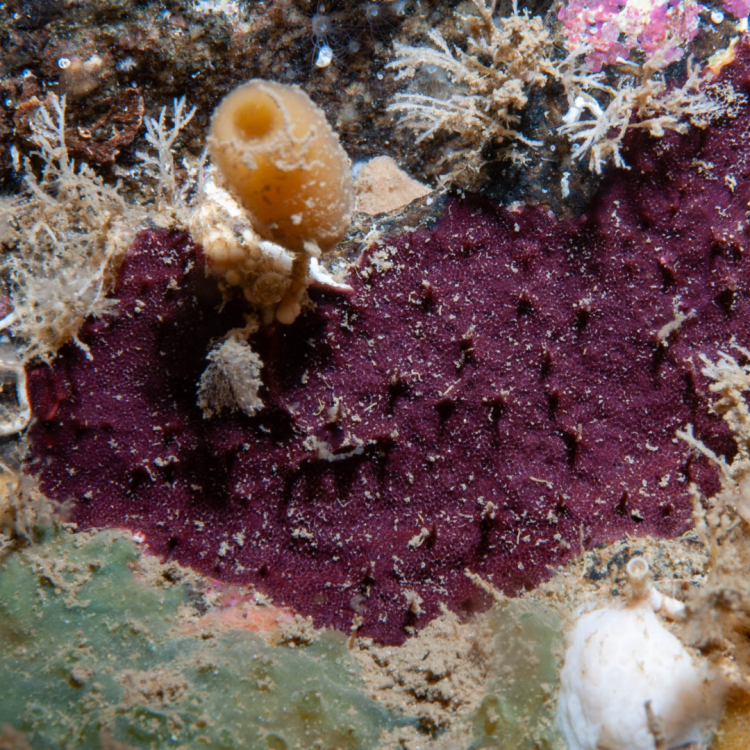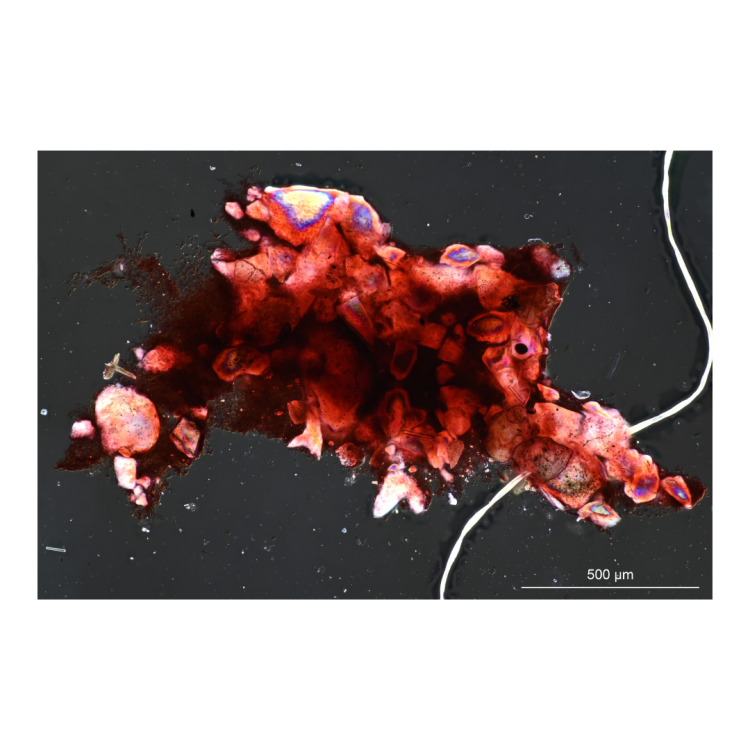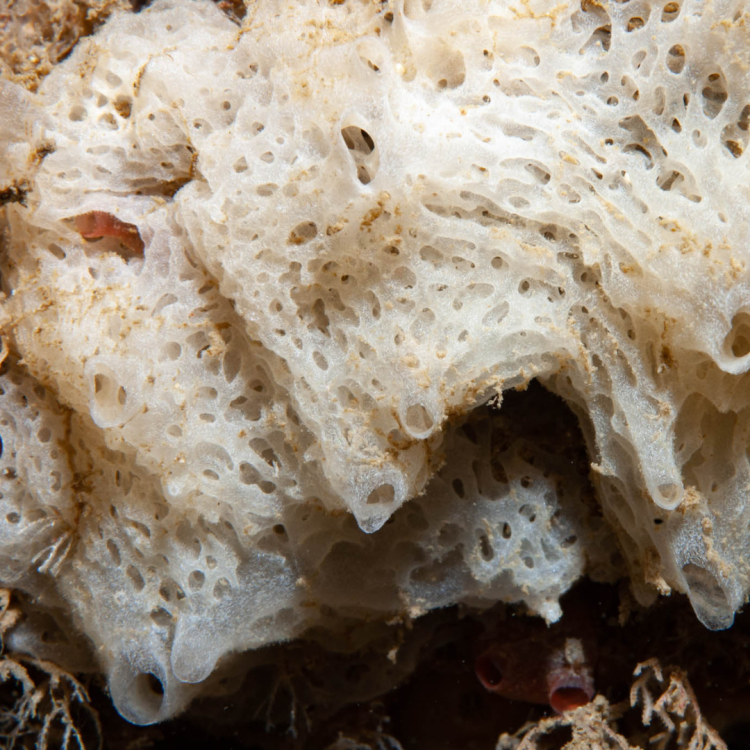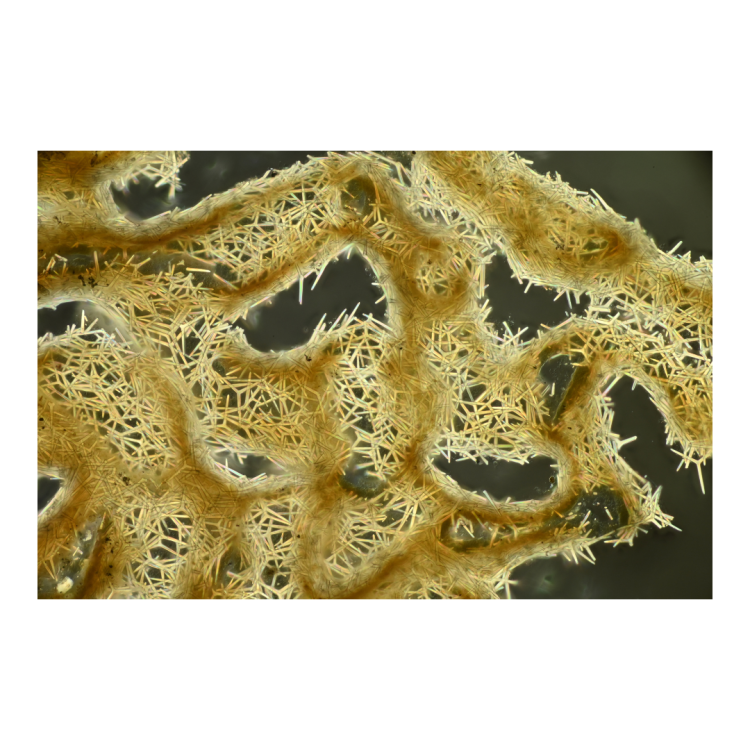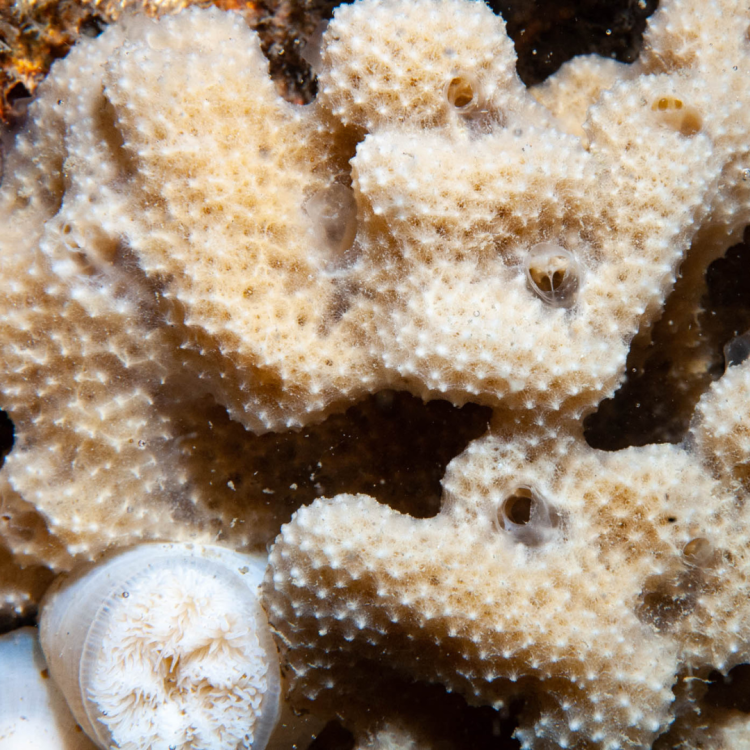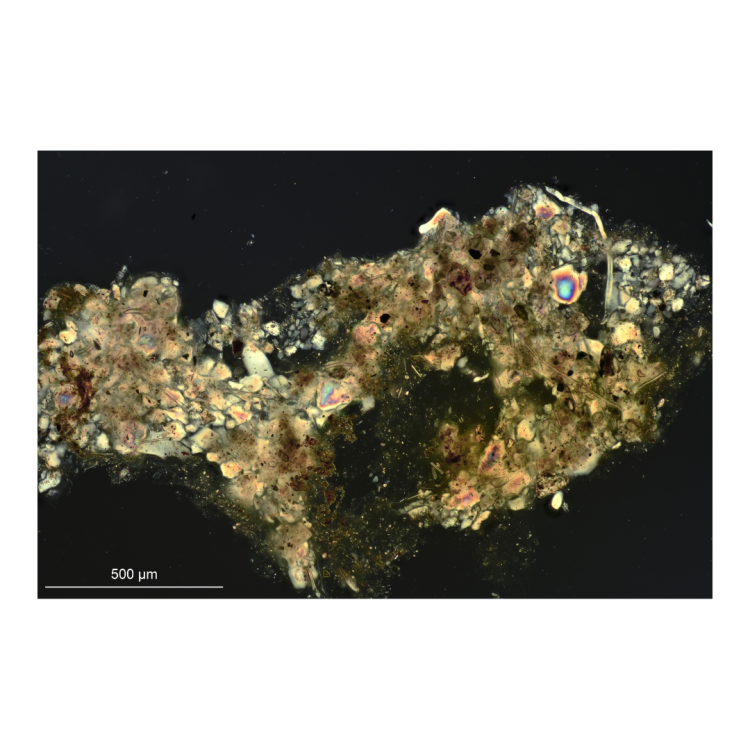
Digitising the Sponge Collection
The sponge collection was started in 1968 as part of an inventory of marine animals of Northern Ireland under Dr David Erwin. This was expanded as part of an initiative by Marine Conservation Society (MCS) to create an identification guide for sponges to help divers record which species they were seeing underwater.
Identification
Sponges are tricky to identify as you need to use the formation of the sponge spicule, which makes up their skeleton, to identify the sponge correctly. These spicules typically range in size from 1mm - .01 mm therefore these have to be viewed with a microscope which can multiply x400 times. The actual sponge can be quite large, usually 5-50 cm and often brightly coloured with yellow, orange and red being common colours.
Sponge & Spicule
The Marine Conservation Society guide was developed to link underwater photographs of the sponges to the correct names based on their skeletons and spicules. Each sponge that was added to the guide, a specimen was collected and added to a museum collection, with most now being kept at Ulster Museum or the Natural History Museum in London.
Expanding the collection
Since 2005 the NMNI collection has been greatly expanded by a series of collecting expeditions. In 2005 the Rathlin Sponge project carried out 6 weeks of fieldwork around Rathlin Island. Rathlin was chosen because the sponges had already been sampled by the Ulster Museum Northern Ireland Sublittoral Survey (NISS) in the 1980s and a few dives in intervening years and a number of specimens were thought to represent species which had never been named.
Rathlin has very rich sponge communities because it has strong tidal streams and steep rocky habitats. This combination makes for ideal habitats for many marine invertebrates by bringing abundant planktonic food to animals which are attached to the seabed.
In 2006-7 more sponges were collected from around Northern Ireland as part of an investigation into species of conservation concern. Sites included the Maidens, which have some similarity of habitats to Rathlin, and Strangford Lough, with more sheltered habitats. In 2008-10 a project to collect sponges using the same methods, diving, photography in situ, followed by preservation as museum specimens, was carried out at sites in western Scotland, Wales and the Channel Islands. This expanded the collection to 6000 specimens with most of these accompanied by underwater photographs.

Usually only a small part of the sponge was collected as sponges have no internal organs and a piece of sponge from the edge of an individual gives the full set of spicules needed for identification, allowing the sponge to grow back where it has been sampled.
Worldwide sponges are a diverse group of animals, with about 6000 named species and probably more than 6000 not yet named or studied at all. In Northern Ireland there are about 300 species known at present.
Digitisation
In 2022 we started a project to digitise the sponge collection by photographing the microscope slides which were made for identification of each specimen. As sponge spicules are made of silica or calcium carbonate they are transparent and special lighting techniques are needed to see them clearly down a microscope. A microscope fitted with differential interference contrast optics was used to make the photographs. It uses two polarising filters set at right angles to cut out the light background and the spicules then appear bright against a black background. The microscope also has very shallow depth of focus, so only part of a spicule is in focus at a time. To create images with depth and sharp focus a series of images are gathered as the microscope is focused slowly through the specimen.
Unstacked images
These images are then combined using Helicon focus to stack the images creating a composite with in-focus parts of each image preserved. The end product will be a set of photographs of each species of sponge to illustrate its spicules and the way the spicules are arranged in the skeleton.

These images will be added to the existing website and will make it easier for people who want to identify sponges to compare with their own samples. Currently the website has drawings of the spicules for most species, SEMs of some types of spicule, and descriptions. These can be hard to interpret for beginners in sponge identification, who will be looking at a microscope slide with a light microscope and will not easily see the skeleton arrangement or the size differences in different types of spicule. The images will be CC-BY copyright so we can use them in other places such as iNaturalist and World Porifera database as well as host them in Collections+, the museum’s specimen database.
